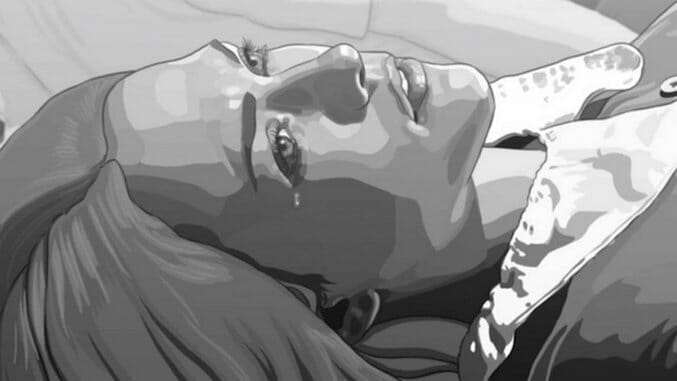The Power of Animation in Documentaries
Keith Maitland's Tower and other docs pose new questions about nonfiction filmmaking

An animated documentary, by its very nature, makes self-evident its own mode of production. More openly than live-action documentaries (though not without exception), documentaries that make use of animation in the bulk of their presentation like Waltz with Bashir (2008) and Chicago 10: Speak Your Peace (2007) signal to their viewers the artificial constructedness of their production. It flies against the most widely held (though ultimately quite dubious) claim that documentary film has the artistic and moral imperative to present that which is factual and actual.
In Tower, the latest documentary from Keith Maitland (which opens October 12), audiences are confronted with animated images of the country’s earliest mass shooting on a college campus. The day is August 1, 1966 and the University of Texas in Austin is having a quiet if uneventful morning. A young boy is delivering papers on a bicycle with his cousin. A cop is relaxing with one of his colleagues. A pregnant college girl is walking with her boyfriend down the school’s main thoroughfare. That is, until an unidentified person begins shooting from the school’s clock tower. This led to a 90-minute standoff during which a total of 18 people died and more than 30 were wounded before the shooter was killed by a police officer. Tower shows us this almost in real time, with Maitland putting us squarely at the center of the action as we follow a number of the people who lived through this bloody day. The images are in grayscale, with some color accents, rendered using rotoscoping so that what we’re watching looks like an accurate (lifelike, even) facsimile of the events during that hot late summer day but with enough of a stylistic distance that the subject matter and its attendant violent images have a discomforting effect.
Throughout, Maitland (A Song for You: The Austin City Limits Story) and his animators shuttle back and forth between archival footage (mostly of the tower from where the shooter perched himself) and a series of reenactments of people’s memories of that day. This allows Tower to depict scenes that would, one imagines, be either too painful or exploitative to watch had they been filmed: When the pregnant girl and her boyfriend get shot, we see no splashes of red blood, just a shattering of the animated image, abstraction taking the place of the literal. Sheila Sofian, in an in-depth feature on animated documentaries, posits this as this increasingly burgeoning genre’s greatest strength: “I believe,” she writes, “that the use of iconographic images impact the viewer in a way in which live-action cannot. The images are personal and ‘friendly.’ We are willing to receive animated images without putting up any barriers, opening ourselves up for a powerful and potentially emotional experience. The simplicity of the images relieves some of the harshness of the topic being described.” It’s no surprise that documentarians who have gravitated toward using animation in their nonfiction projects have often done so when dealing with particularly icky if not outright gory subject matter. In her short film The Velvet Tigress, Jen Sachs tells the story of the murder trial of Winnie Ruth Judd in the 1930s (including graphic imagery of the body parts she disposed of), while in Penny Lane’s Nuts! (the “mostly true” story of Dr. John Romulus Brinkley, the kooky genius who built an empire out of his goat-testicle impotence cure), animation allowed the filmmakers to depict some of the more ridiculous and altogether R-rated elements of Brinkley’s life story. What might otherwise be too graphic or even merely gratuitous within the realm of live action becomes palatable (engaging, even) when filtered through an animated lens.
-

-

-

-

-

-

-

-

-

-

-

-

-

-

-

-

-

-

-

-

-

-

-

-

-

-

-

-

-

-

-

-

-

-

-

-

-

-

-

-









































